
Concept explainers
(a)
The value of
Answer to Problem 74QAP
The value of
Explanation of Solution
Given data:
Formula Used:
Newton's second law:
Calculation:

We'll use two different but related coordinate systems for the two blocks. For block
We can draw free-body diagrams and apply Newton's second law in component form for both blocks.
The tension acting on each block will be identical in magnitude.
Since block
Since, both blocks are at rest, which means the acceleration of each block is zero and we can calculate
.
Free-body diagram of
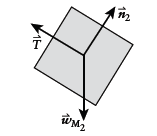
Newton's second law for
Free-body diagram of
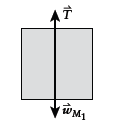
Conclusion:
For two blocks to be in equilibrium the value of
(b)
The magnitude of acceleration of two blocks if the system can move.
Answer to Problem 74QAP
The magnitude of acceleration of two blocks
Explanation of Solution
Given data:
Formula Used:
Newton's second law:
Calculation:

We'll use two different but related coordinate systems for the two blocks. For block
We can draw free-body diagrams and apply Newton's second law in component form for both blocks.
The tension acting on each block will be identical in magnitude.
Since block
Since,
The magnitude of the acceleration will be the same for each block because they are joined together with a string.
Free-body diagram of

Free-body diagram of
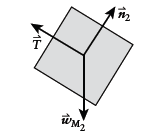
Newton's second law for
Conclusion:
If the system can move the magnitude of acceleration of two blocks is
(c)
The direction of
Answer to Problem 74QAP
The direction of
Explanation of Solution
Given data:
Formula Used:
Newton's second law:
Calculation:

We'll use two different but related coordinate systems for the two blocks. For block
We can draw free-body diagrams and apply Newton's second law in component form for both blocks.
The tension acting on each block will be identical in magnitude.
Since block
Since,
Free-body diagram of

Free-body diagram of
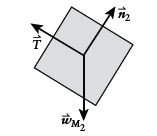
Newton's second law for
Since
Conclusion:
As we have value of
(d)
The distance to which block
Answer to Problem 74QAP
The distance to which block
Explanation of Solution
Given data:
Formula Used:
Newton's second law:
And
Calculation:

We'll use two different but related coordinate systems for the two blocks. For block
We can draw free-body diagrams and apply Newton's second law in component form for both blocks.
The tension acting on each block will be identical in magnitude.
Since block
Since,
If the acceleration is constant, we can use the constant acceleration equations to calculate how far
Free-body diagram of
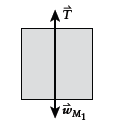
Free-body diagram of

Newton's second law for
By using the constant acceleration equations to calculate how far
Conclusion:
Thus in
Want to see more full solutions like this?
Chapter 4 Solutions
COLLEGE PHYSICS,VOLUME 1
- A crate of mass 50 kg slides on a horizontal floor under the action of an applied horizontal force of 200 N and against a friction force of 120 N. Calculate (a) the acceleration, and (b) the applied horizontal force required to give the same acceleration with twice the mass and half the friction.arrow_forwardA 3.00-kg object undergoes an acceleration given by a=(2.00i+5.00j)m/s2. Find (a) the resultant force acting on the object and (b) the magnitude of the resultant force.arrow_forwardTwo blocks of mass 3.50 kg and 8.00 kg are connected by a massless string that passes over a frictionless pulley (Fig. P4.47). The inclines are frictionless. Find (a) the magnitude of the acceleration of each block and (b) the tension in the string. Figure P4.47arrow_forward
- If the only forces acting on a 5-kg mass are F1 = (2i- 3j) N and F2 = (6i + 8j) N, what is the magnitude of the acceleration of the particle?arrow_forwardA block of mass m1 = 14.5 kg is on a frictionless table to the left of a second block of mass m2 = 22.0 kg, attached by a horizontal string. If a horizontal force of 1.25 x 10^2 N is exerted on the block m2 in the positive x-direction, use the system approach to find the acceleration of the two blocks. (Report answer to 3SF; unit: m/s^2)arrow_forwardBlock A has a mass of 10 kg, and blocks B and c have masses of 5 kg each. Knowing that the blocks are initially at rest and that B moves through 3 m in 2 s, determine (a) the magnitude of the force P, (b) the tension in the cord AD. Neglect the masses of the pulleys and axle friction.arrow_forward
- When the Moon is directly overhead at sunset, the force by Earth on the Moon, FEM , is essentially at 90° to the force by the Sun on the Moon, FSM , as shown below. Given that FEM = 1.98 × 1020 N and FSM = 4.36 × 1020 N, all other forces on the Moon are negligible, and the mass of the Moon is 7.35 × 1022 kg, determine the magnitude of the Moon’s acceleration.arrow_forwardA constant horizontal force F of magnitude 0.1 N is applied to m1. If m1 = 1.0 kg and m2 = 0.33 kg, find the magnitude of the acceleration of the system of two blocks.arrow_forwardIn 1991, a lobster with a mass of 20.0 kg was caught off the coast of Nova Scotia, Canada.Imagine this lobster involved in a friendly tug of war with several smaller lobsters on ahorizontal plane at the bottom of the sea. Suppose the smaller lobsters are able to drag thelarge lobster, so that after the large lobster has been moved 1.55 m its speed is 0.550 m/s. Ifthe lobster is initially at rest, what is the magnitude of the net force applied to it by thesmaller lobsters? Assume that friction and resistance due to moving through water arenegligiblearrow_forward
- Body A in Fig. 6-33 weighs 102 N, and body B weighs 32 N. The coefficients of friction between A and the incline are µs =0.56 and µk =0.25. Angle θ is 40. Let the positive direction of an x-axis be up the incline. In unit-vector notation, what is the acceleration of A if A is initially (a) at rest, (b) moving up the incline, and (c) moving down the incline.arrow_forwardAssuming the mass is the same, how does the acceleration of an object depend on the force exerted on the object?arrow_forward
 Principles of Physics: A Calculus-Based TextPhysicsISBN:9781133104261Author:Raymond A. Serway, John W. JewettPublisher:Cengage Learning
Principles of Physics: A Calculus-Based TextPhysicsISBN:9781133104261Author:Raymond A. Serway, John W. JewettPublisher:Cengage Learning Physics for Scientists and Engineers with Modern ...PhysicsISBN:9781337553292Author:Raymond A. Serway, John W. JewettPublisher:Cengage Learning
Physics for Scientists and Engineers with Modern ...PhysicsISBN:9781337553292Author:Raymond A. Serway, John W. JewettPublisher:Cengage Learning College PhysicsPhysicsISBN:9781305952300Author:Raymond A. Serway, Chris VuillePublisher:Cengage Learning
College PhysicsPhysicsISBN:9781305952300Author:Raymond A. Serway, Chris VuillePublisher:Cengage Learning College PhysicsPhysicsISBN:9781285737027Author:Raymond A. Serway, Chris VuillePublisher:Cengage Learning
College PhysicsPhysicsISBN:9781285737027Author:Raymond A. Serway, Chris VuillePublisher:Cengage Learning



